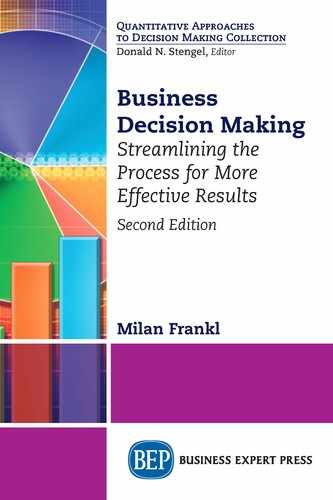CHAPTER 4
Why Technology Is Not Important—Or Is It?
(Computers Are Dumb)
Vignette: The Books Are in German
“Los libros son en Alemán,”i said Pablo.
I was in Latin America only for several weeks, and my Spanish was still very rusty, but I was sure that Pablo just said in Spanish, “The books are in German.”
This Latin American Credit Union in Guatemala City was serving farmers in need of funds to improve their crop yield and acquire farming equipment. The funds were advanced by North American and European Credit Unions in either cash or equipment. The German donation was a Philips minicomputer with some financial management software to help the credit union manage its loans.
Acting as a Canadian strategic financial consultant for COLAC,ii the Latin American Confederation of Credit Unions, I was to explore the best ways of using the donated funds at the receiving end. The objective was to minimize management and other types of operational expenses in order to direct most of those funds to the farmers in need.
In this Latin American country’s credit union, the problem was different: The equipment was to benefit the credit union. It was to help the credit union manage the funds distributed to the farmers.
None of the credit union employees spoke German. Unfortunately, training was not part of the donation. Two years after delivery, the Philips minicomputer was still in its original packaging, gathering dust in the basement of the building.
The donated computer was useless to them.
Do not confuse the process with the outcome.
Lessons Learned: Technology Is Not the Only Solution
Often, technology is perceived as a panacea for operational problems. Installing computers is intended to solve potential business issues, even when those issues do not exist.
Despite the high-performance expectation from the introduction of information technology (IT) in business, white-collar productivity has not shown appreciable improvement, at least not the same performance improvement as achieved by blue-collar workers.
White-collar iii performance improvement using computers can be illusive.13
Vignette: The Baseball Bat
Andrew was walking on the plant floor with what looked like a baseball bat. Everybody knew Andrew. He was with the company longer than anyone could remember. One of the most senior millworkers, he knew very well what he was doing.
Thump, thump. He was “batting” on what was becoming a jumbo reel that could contain more than 80 kilometers of white paper sheet 8.5 meters in width and weighing up to 120 tons.
This unique capability of estimating the quality level of the paper roll by listening to the wooden thump sounds from his bat allowed him to help monitor manufacturing consistency and assist in controlling the speed of the paper roll-out process. He was signaling to the roll operators what needed to be done. This way his actions were reflected in the quality of the paper’s surface strength and its water resistance. Too much moisture, increase the speed of the rollers. Too little moisture, lower the rollers’ speed. Optimum humidity levels ensure that good-quality paper was produced, and the paper would better resist tearing during the final high-speed newspaper-printing process, its ultimate destination.
This description briefly illustrates one of the major last steps of the paper-making process.iv
What Andrew was doing was also a problem the company faced: What will happen when Andrew retires a few years from now?
At the time, computer control processes were in their infancy; still, their capabilities were emerging: They could be used for temperature control, humidity control, and various electrical controls, to mention just a few. As an IBM systems expert, I was asked to look for various solutions to the problem the company was facing.
I suggested that the company try some of the new technologies that were developed recently by IBM and evaluate their applicability to address their issue: replacing Andrew by computer-controlled processes.
Easier said than done.
Indeed, this was the best solution, but Andrew’s seniority made it quasi-impossible to eliminate his position or lay him off. He was too old for any other function in the mill. What was to be done to solve this conundrum?
The solution was suggested by the plant foreman: Keep Andrew until he retires, but install the computer control system regardless. The benefits of the computer-improved performance outweighed the cost of keeping Andrew. Andrew retired the year after. His position remained forever vacant.
People versus computers—who wins? Both.
Lessons Learned: Why IT Matters
Erik Brynjolfsson, a professor at the MIT Sloan School of Management, and his collaborator and coauthor Andrew McAfee have been arguing recently that impressive advances in computer technology—from improved industrial robotics to automated translation services—are largely behind the sluggish employment growth in the last 10 to 15 years. Furthermore, those MIT academics foresee dismal prospects for many types of jobs, as these powerful new technologies are increasingly adopted not only in manufacturing, clerical, and retail work but also in professions such as law, financial services, education, and medicine.14
What is obvious is not.
iTranslated from Spanish—“The books are in German.”
iiConfederación Latinoamericana de Cooperativas de Ahorro y Crédito.
iiiUpton Sinclair coined the term “white collar” in his 1919 sociological study “The Brass Check.”
ivFor more information on the papermaking process, visit http://en.wikipedia.org/wiki/Papermaking.
